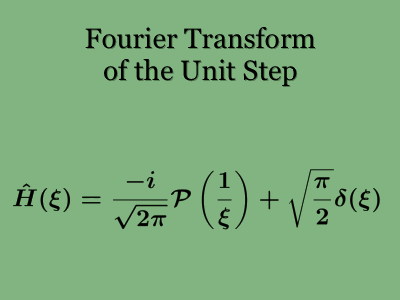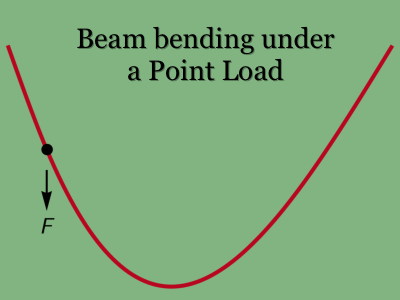Green Functions and Boundary Value Problems
This is the website for an introductory course on Green functions and their use in solving differential equations. The material is primarily based on the classical books by Stakgold/Holst and Zauderer, so credit for the basic material is due to them. The last section on the boundary element method is based on the introductory treatment by Ang. My presentation of this material owes a very significant debt to the authors of the aforementioned textbooks. Any errors that remain are, however, the sole responsibility of myself. I would be grateful to receive any corrections or concerns and can be reached by email at horst@sjtu.edu.cn.
I have taught this course at the University of Michigan - Shanghai Jiaotong University Joint Institute (UM-SJTU Joint Institute) since 2012. In 2014, SJTU generously provided for the videotaping of the lecture segments. The videos as well as additional material has been gathered here in the hope that a wider audience may find it useful.
This 3-credit course (usually taught in about 48 lecture hours) consists of three parts, each dealing with certain mathematical techniques useful for solving differential equations. At every step of the way, examples from mechanical as well as electrical engineering are given. The material is aimed at graduate and advanced undergraduate students in engineering and the physical sciences.



Physical phenomena such as hanging chains, bending bars, electrostatic potentials, and distributions of temperature may be described through solutions of differential equations.
In the classical discussion of differential equations, a function that satisfies a differential equation ("solution") is of course assumed to be differentiable, i.e., "smooth".
However, in physical reality, we encounter non-smooth behavior all the time. The functions corresponding to these phenomena also need to be thought of as "solutions" if the physical model is based on differential equations.
This course will describe the mathematical framework for achieving this.
Syllabus - Part 1 - Generalized Functions
1. Introduction
What are point sources? A first attempt at a mathematical description. How can point source approximations be used for general solutions of differential equations? A first example of a Green function.
2. Generalized Functions (Distributions)
Lots of basic concepts: Functions of compact support. Null sequences and continuous linear maps. Locally integrable functions. The delta "function". Regular and singular distributions.
3. Operations on Distributions
Working with distributions: basic operations such as translation (shifting), dilating (scaling). Can distributions be multiplied? Differentiating distributions. The logarithm and the principle value of 1/x. The Laplacian of 1/|x| in three-dimensional space.
4. Families of Distributions
Sequences and general one-parameter families of distributions. Null sequences of distributions. Convergence and delta families.
5. The Classical Fourier Transform
Functions of rapid decrease (Schwartz functions). The classical Fourier transform of Schwartz functions and its continuity. The inversion theorem for the Fourier transform on Schwartz functions. Further properties of the Fourier transform. Convolution of Schwartz functions.
6. Tempered Distributions and the Fourier Transform
Tempered distributions as a special case of distributions. The Fourier transform for tempered distributions with examples. A major application: solving the homogeneous heat equation in n+1 dimensions with an initial condition as a tempered distribution.
Syllabus - Part 2 - Ordinary Differential Equations
7. Differential Operators and Types of Solutions
The general form of a linear differential operator. The conjunct and the formal adjoint. Green's formula and Lagrange's identity. Classical and weak solutions to differential equations.
8. Causal Fundamental Solutions and Initial Value Problems.
Fundamental solution to ODEs. Causal fundamental solutions and how to find them. A review of initial value problems, including existence and uniqueness of solutions and independence of solutions via the Wronskian. A general solution formula.
9. Second-Order Boundary Value Problems
Some basic methods for solving boundary value problems for second-order equations with different types of boundary conditions.
10. Adjoint Boundary Value Problems and Higher-Order Equations
Adjoint boundary value problems and Green functions. A new perspective on the solution formula. Higher-order equations.
11. Solvability Conditions and Modified Green Functions
Not every boundary value problem is solvable. A condition for the existence and uniqueness of solutions. Problems that do not always have a solution may not have a Green function. So-called modified Green functions can then be constructed and used in solution formulas instead.
Syllabus - Part 3 - Partial Differential Equations
12. Boundary Value Problems for Partial Differential Equations
We will consider the classical, physically important, forms of second-order partial differential equations: the general heat, wave and potential equations with Dirichlet, Neumannn and Robin boundary conditions. Previous concepts from Part 2 are introduced in the context of PDEs and solution formulas are derived.
13. Eigenfunction Expansions
Finding Green functions is much more difficult for PDEs than for ODEs. Here, we introduce the method of full and partial eigenfunction expansions that can also yield approximations to actual Green functions.
14. The Method of Images
A beautiful approach for deriving Green functions in highly symmetrical situations is the method of images. Motivated by the idea of "virtual charges" in electrostatic, various examples are discussed, including a case of a line charge for a Robin problem.
15. The Boundary Element Method
Fundamental solutions and Green functions are also useful in some non-analytic approaches. The boundary element method (BEM) makes use of these for the numerical solution of problems.